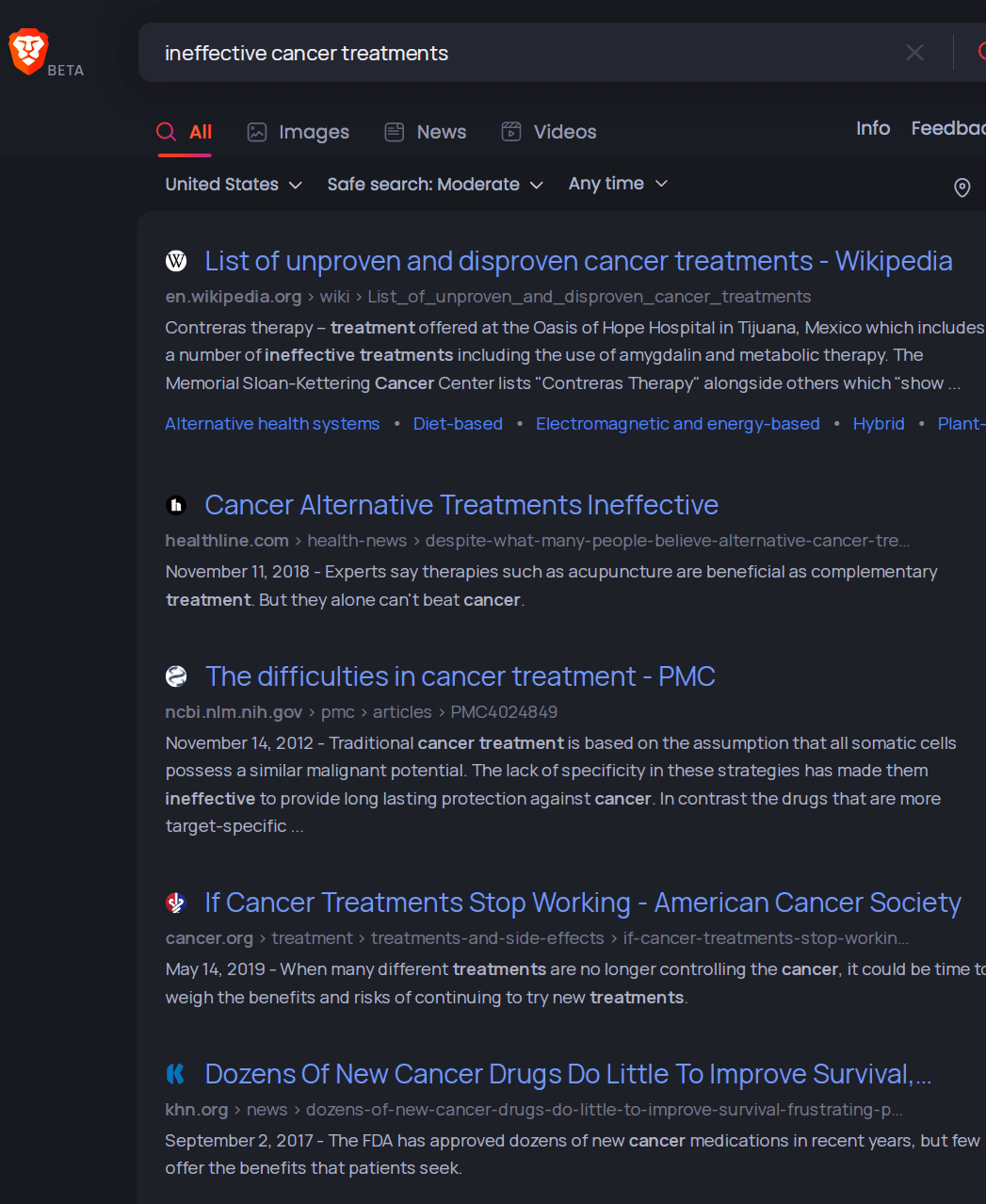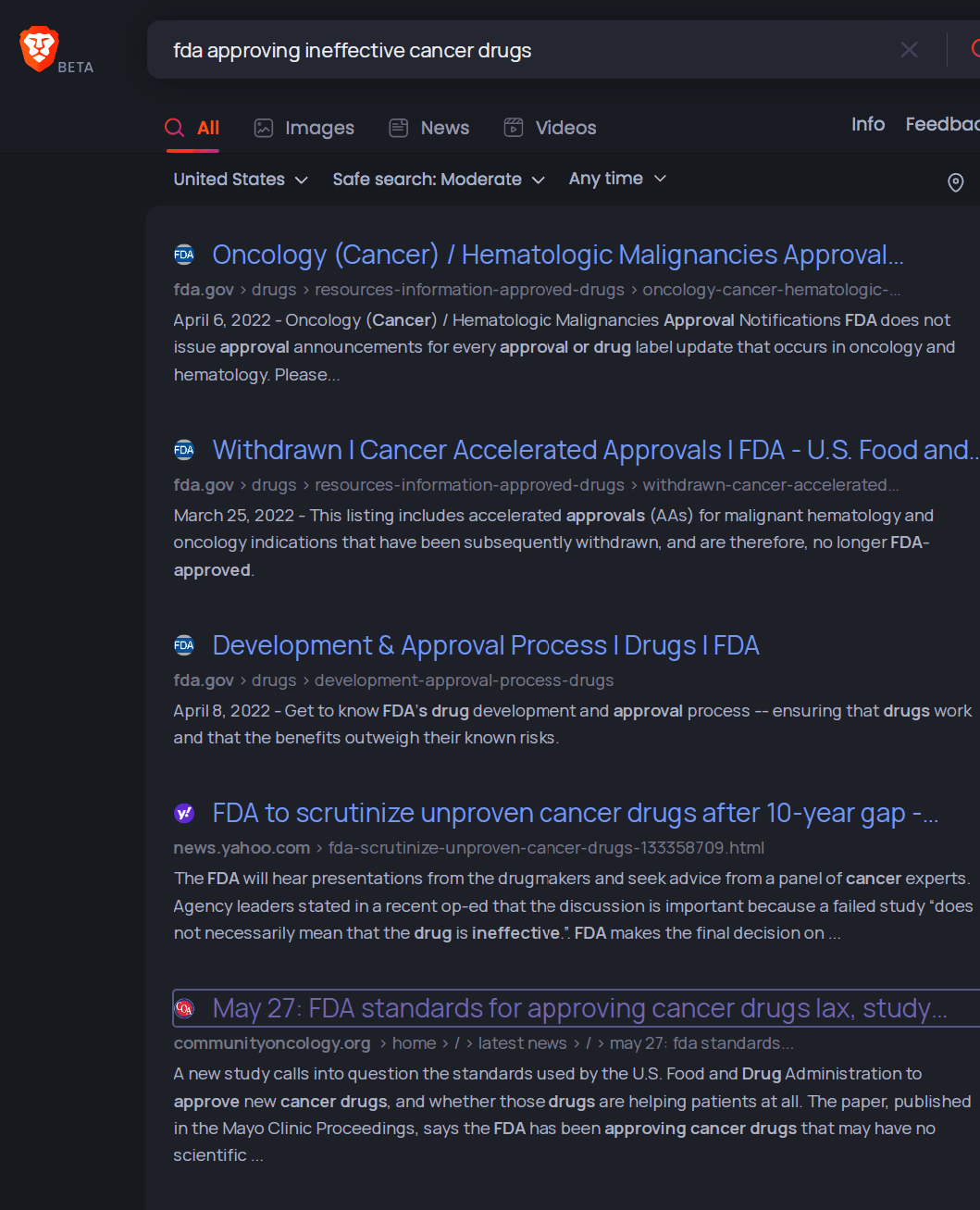How the FDA Constantly Performs Ineffective FDA Oncology Approvals to Score Points with Big Pharma
Executive Summary
- The FDA is so subservient to Big Pharma that they routinely approve new cancer drugs that don’t work.
- We cover how the drugs get pushed through.

Introduction
The FDA has become an unreliable source of whether a drug is effective. This is a common problem with new FDA oncology approvals.
Our References for This Article
If you want to see our references for this article and other related Brightwork articles, see this link.

It was curious to do a web search for ineffective cancer drugs, and find so few relevant results.

A search for the FDA approving ineffective cancer drugs also brought forth few results.
These search results show a massive understatement of the actual issue of ineffective cancer drugs and ineffective and wasteful FDA oncology approval.
What drug companies do is find what is called a “surrogate endpoint” which is normally shrinking a tumor. This is explained below.
Problem #1: The Surrogate Endpoint in a Study – Cherry Picking the Time Point At Which the Scientific Study Ends
Creating something called “surrogate endpoints” is changing the goal away from solving the disease to another endpoint. This was done to push the covid vaccines through, and is an old trick used by pharmaceutical companies. This is explained in the following quotation.
Surrogate endpoints are an alternate endpoint and stand in for the thing that actually matters to patients. An example of a surrogate endpoint is looking at whether a drug lowers cholesterol instead of looking at the thing that actually matters overall mortality. By using a surrogate endpoint, the researchers can claim that the drug is successful when they have in fact showed no such thing. Another example of a surrogate endpoint that is frequently used in studies of cholesterol lowering drugs is looking at cardiovascular mortality instead of overall mortality.
The alternative to a per protocol analysis is an intention to treat analysis and this analysis everyone who started the study is included in the final result, regardless of whether they dropped out or not, this gives a much more accurate understanding of what results can be expected when a patient starts a treatment and should be standard for all scientific studies in health and medicine.
Pharmaceutical companies engage in a lot of trickery when it comes to the method and in the interpretation of the results, but I think it’s uncommon for them to engage in outright lying when it comes to the hard data presented in the result tables. There is, however, one blatant manipulation of the results that happens frequently. I’m talking about cherry picking the time point at which a scientific study is ended. This can happen when researchers are allowed to check the results of their study and when it is still ongoing. If the results are promising, they will often choose to stop a study at that point in claim that the results were so good that it would have been unethical to go on. Because of a statistical phenomena known as regression to the mean, basically, the longer a scientific study goes on, and the more data points that end up being gathered, the closer the result of the study is to the real result. Early on in the study, the results will often swing wildly just due to statistical chance. So studies will tend to show bigger effects early on and smaller effects towards the end. This problem is compounded by the fact that if a study at an early endpoint, at an early point shows a negative result or a neutral result or even a result that is positive but not positive enough, the researchers will usually continue the study in hopes of getting a better result. But the moment the result goes above a certain point they stopped the study and claimed maximum benefit from their treatment. That is how the time point in which a study is stopped and stopped ends up being cherry picked. This is why the plan length of a study should always be posted in advance on clinical trials.gov. And why researchers should always stick to the plan length and never look at the results until the study has gone on for the plan length. If a study is stopped early at a time point of the researchers choosing the results are not statistically sound no matter what the P values may show. Never trust the results of a study that stopped early. – Why Most of What You Know About Covid is Wrong